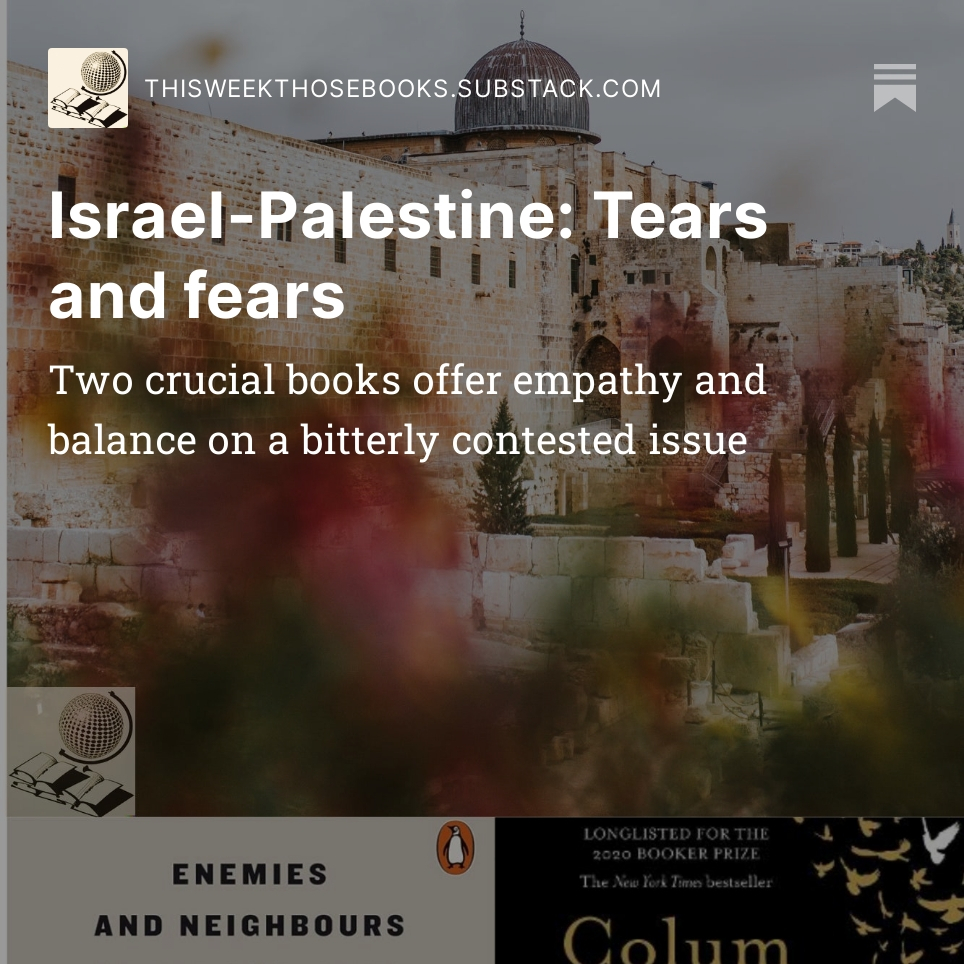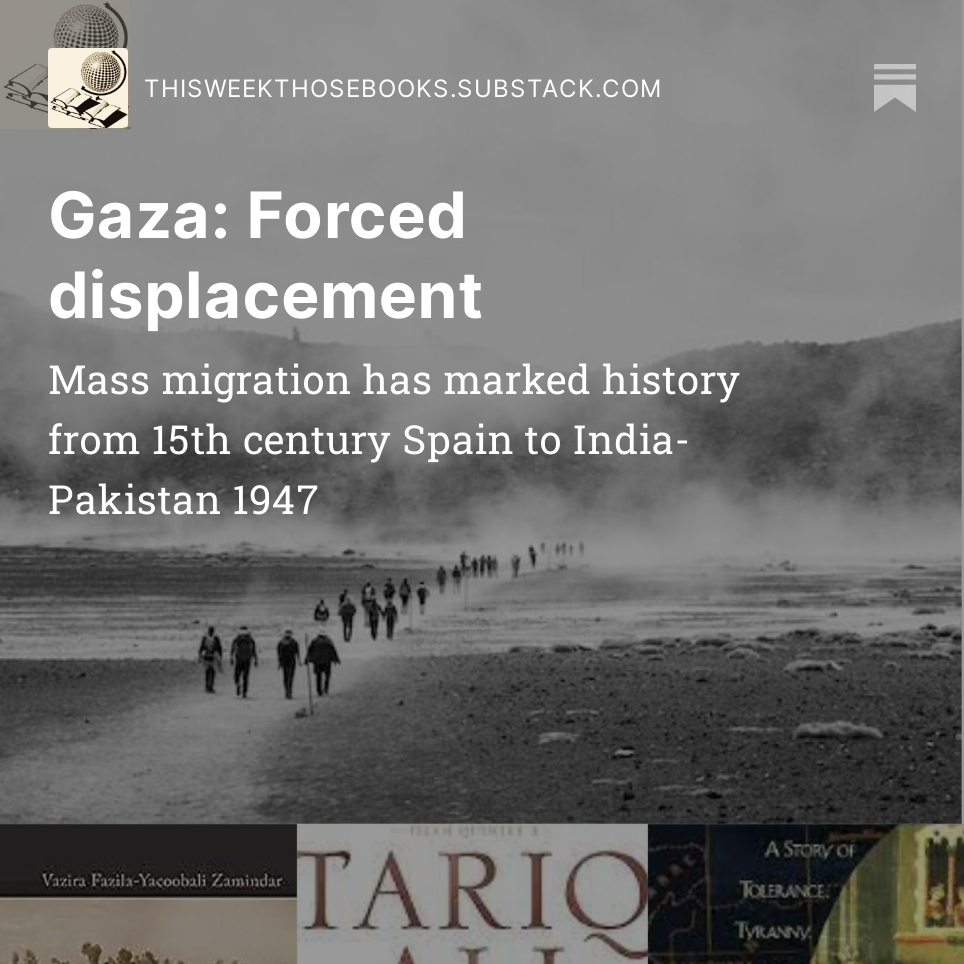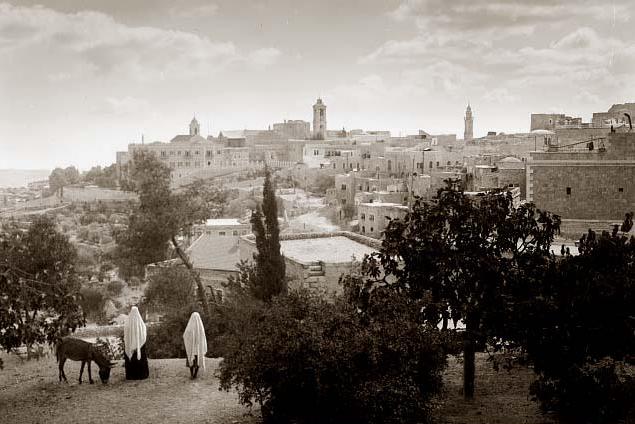Holocaust Day resonates even deeper, now
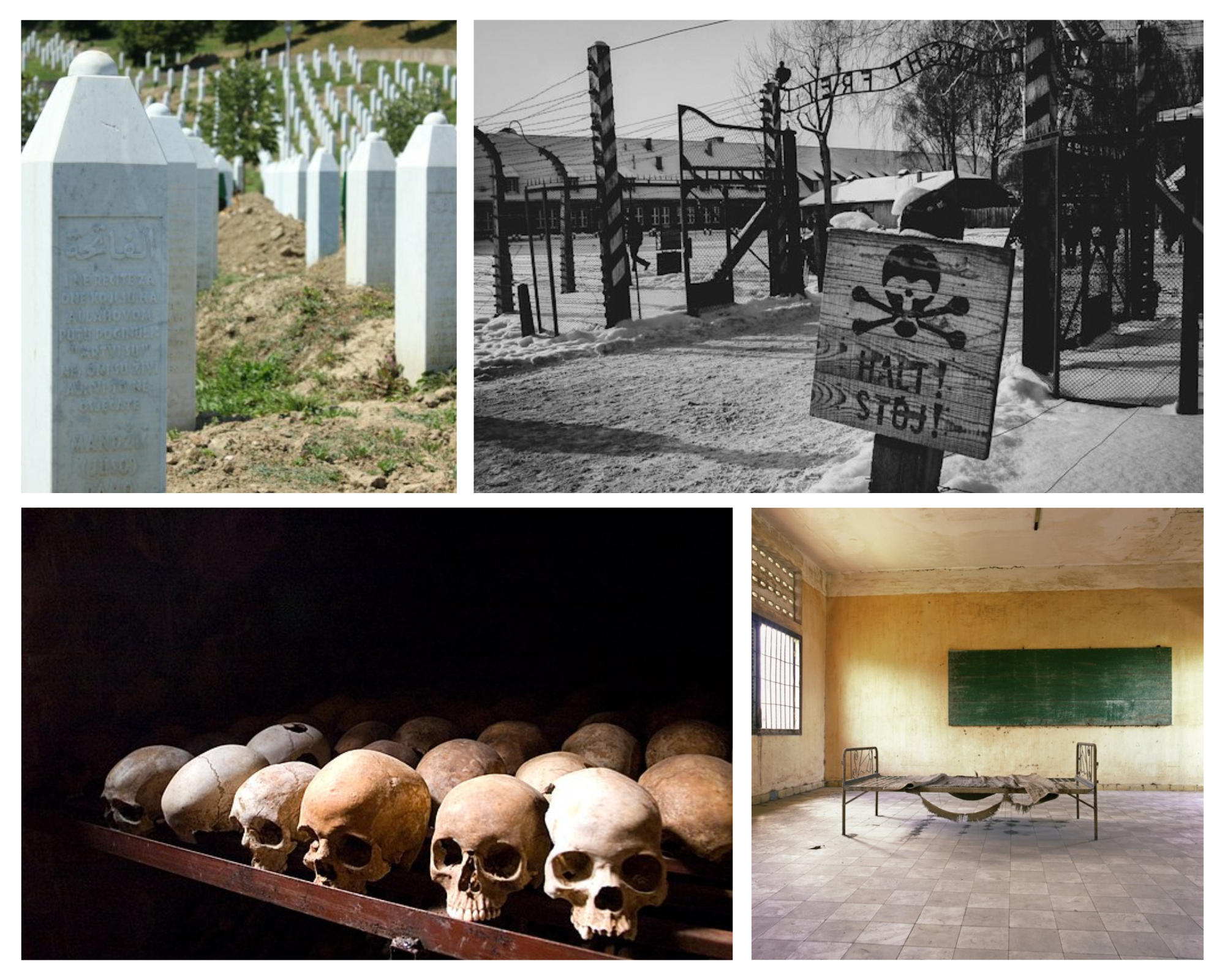
Here’s the full version of the Jan24 This Week, Those Books. Sign up for free at https://thisweekthosebooks.com/ and get the post the day it drops
Welcome to This Week, Those Books, your rundown on books new and old that resonate with the week’s big news story.
The few minutes it takes to read this newsletter will make you smarter, faster. Or click on the audio button above for a human, not AI, voiceover by my close collaborator Michael. These book suggestions come with a summary and quotes. So even if you don’t read the actual book, you’ll be able to discuss it. I never recommend a book I don’t like and I look through a number every week to find the few I share with you. Find me on Twitter, LinkedIn, Facebook or YouTube.
Book Lovers, Rejoice!
We’re celebrating This Week, Those Books’ six-month birthday with more than 6,500 subscribers in 96 countries. Grab your chance to own The Dictator’s Wife by Freya Berry, the very first book featured in the inaugural issue. Click here to comment by February 1 and your name will be entered in the competition to win the book. Hurry!
Yours,

The Big Story:
Commemorations of International Holocaust Remembrance Day have a troubling resonance this year, 15 weeks into Israel’s punishing military operations in Gaza.
- About 1% of Gaza’s population has been killed in the Israeli response to the brutal October 7 attacks by Hamas.
- Just weeks ago, the International Court of Justice in The Hague heard that Israel had shown “chilling” and “incontrovertible” intent to commit genocide in Gaza. Israel described the case, brought by South Africa, as ”malevolent” and “a libel”.
- South Africa alleges that public pronouncements by Israeli officials, including Prime Minister Benjamin Netanyahu, are genocidal in nature.
- Britain’s Chief Rabbi has said that using the word “genocide” to describe Israel’s actions “is a moral inversion, which undermines the memory of the worst crimes in human history”.
- But Russian-American journalist Masha Gessen, who is Jewish and whose family lost loved ones in the Holocaust, argued in a New Yorker essay that treating the Holocaust as a “singular event” makes it impossible to learn the lessons needed to prevent other genocides.
- Israeli writer Noa Tishby pushed back against genocide allegations against Israel. Palestinian journalist Afaf Al-Najjar alleged that Gaza shows the world’s failure to keep its 80-year pledge to prevent another Holocaust.
The Backstory:
- The United Nations established January 27 as Holocaust Remembrance Day in 2005 with the aim of “education, in order to help to prevent future acts of genocide”.
- The date was chosen to mark the liberation in 1945 of Auschwitz-Birkenau, the largest Nazi concentration camp.
- Article II of the 1948 Genocide Convention defines the crime as “acts committed with intent to destroy, in whole or in part, a national, ethnical, racial or religious group, as such”.
- The word ‘genocide’ was coined to describe the Holocaust – atrocities committed by the Nazis on Jews and others – which Stanford historian Norman Naimark calls “the most extreme case of genocide (but one that) needs to be compared with other episodes over time and space”.
- But international horror did not prevent subsequent genocides, not least Cambodia in the 1970s, Rwanda, 1994 and Bosnia, 1995.
This Week, Those Books:
- An expansive view of the history of mass killing.
- A novel on the tendency to hold on to victimhood.
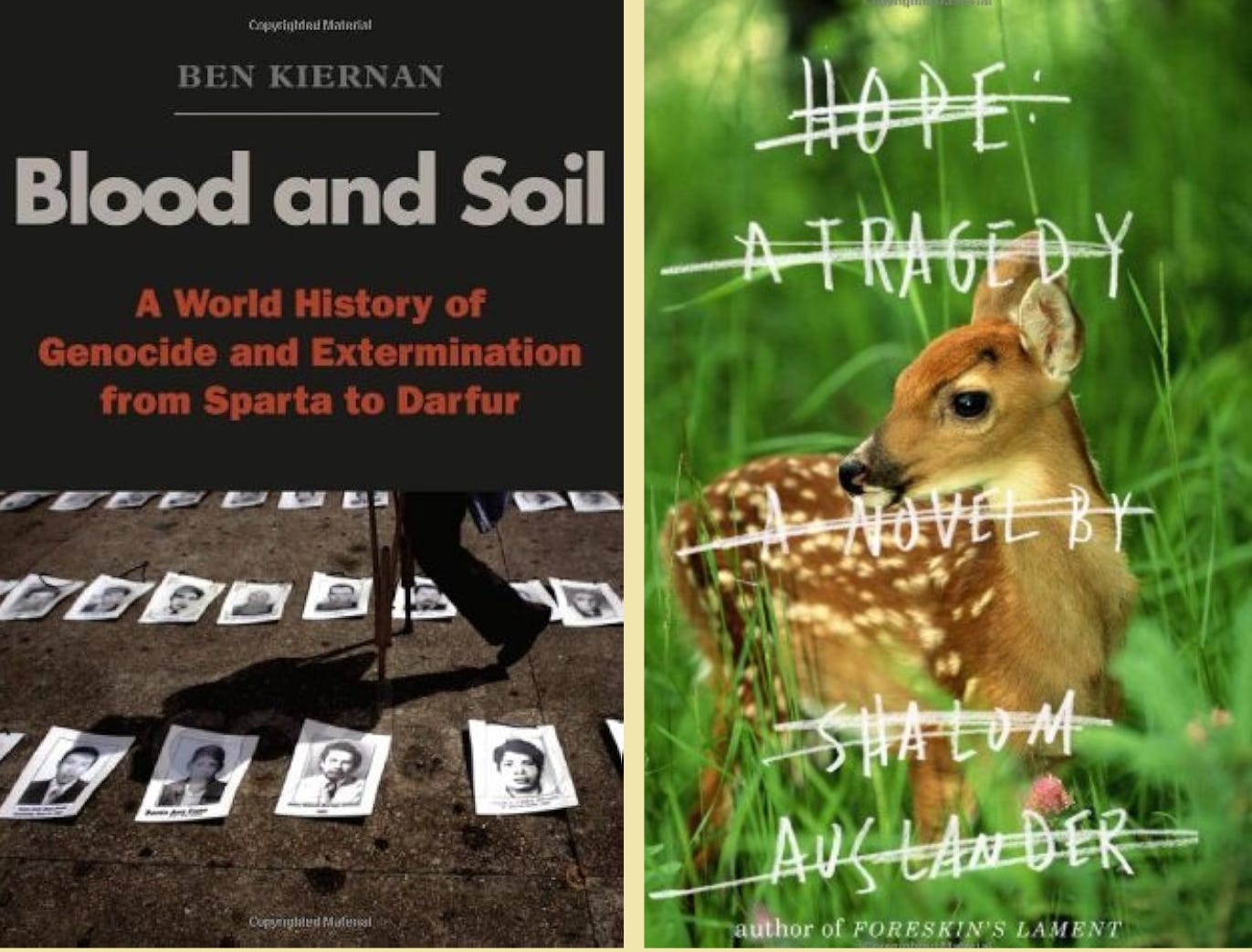
- Blood and Soil: A World History of Genocide and Extermination from Sparta to Darfur
By: Ben Kiernan
Publisher: Yale University Press
Year: 2007
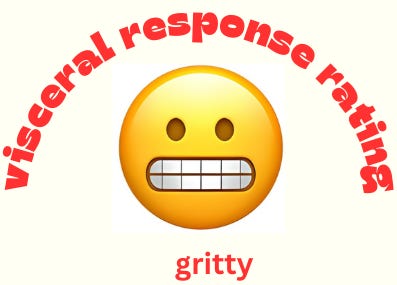
At 724 pages – only 24 of which constitute the index – this is a sweeping view of the hideous phenomenon that has persisted through human history: the tendency to commit mass murder and target a specific local or regional community as part of a state-organised or communal initiative. Unlike most authors of recent books on genocide, Professor Ben Kiernan believes “mass killing was no New World novelty” and in the 20th century, “all continents produced perpetrators of genocide as well as dissenters”.
As founding director of Yale University’s Genocide Studies Program, Kiernan is well placed to put the global history of genocide in context. And he does, going back to the ancient Greeks, even as he keeps his focus on the six centuries since 1400. For that was when “the main features of modern genocidal ideology emerged,” he writes, “from combinations of religious or racial hatred with territorial expansionism and cults of antiquity and agriculture”.
Kiernan acknowledges that while much of his book documents genocides by Europeans, “they hold no monopoly on the crime”. In Haiti, for instance, African slaves, “committed genocidal massacres of European settlers and planters”. And in 1660, the Fifth Dalai Lama issued poetic, if chilling “instructions to repress Tibetan rebels”:
Make the male lines like trees that have had their roots cut; / Make the female lines like brooks that have dried up in winter;/…In short, annihilate any traces of them, even their name.

- Hope: A Tragedy
By: Shalom Auslander
Publisher: Riverhead Books
Year: 2012
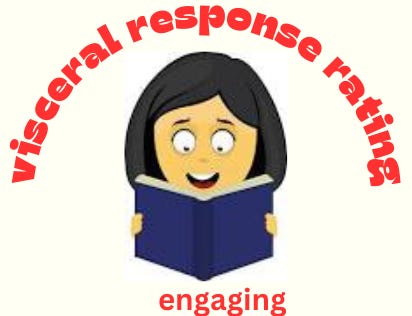
Young American Jewish professional Solomon Kugel feels suffocated by the tragedy of history. His mother, for instance, though born in Brooklyn, New York, in 1946, imagines she is a survivor of the Nazi concentration camps. The novel has a foul-mouthed old woman who’s living in Kugel’s attic and claims to be Anne Frank.
This is satire, but not to poke fun at the Holocaust; rather those who use it to underline the primacy of their victimhood.
Choice quote:
“‘What’s that?’ Kugel asked, pointing to the lampshade she [mother] had placed beside him on the bed.
That, she said with a sigh. That’s your grandfather.
…It says Made in Taiwan, Kugel said.
…’Well, they’re not going to write Made in Buchenwald, are they?’ she snapped.”

